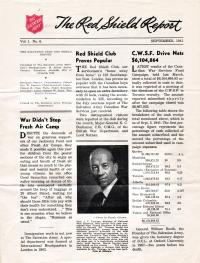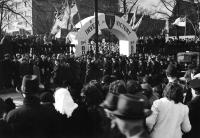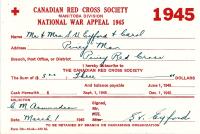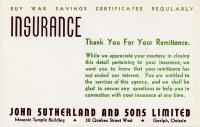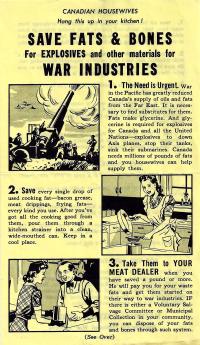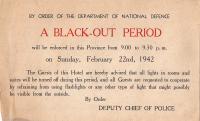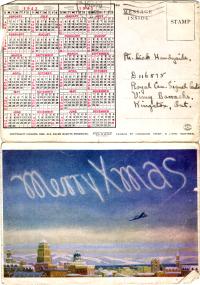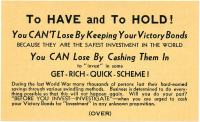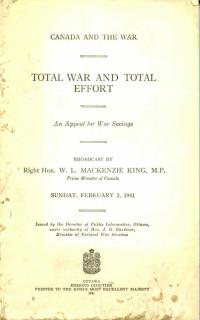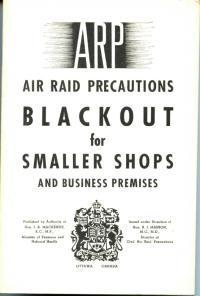Volunteering
Introductory Essay
News from the Salvation Army
This monthly newsletter detailed the extensive war work of the Salvation Army, from providing welcome centres for Canadians in uniform around the world to raising money for the Canadian War Services Fund.
Victory Bond parade
The theme of the 7th Victory Loan campaign, which opened in October 1944, was "Invest in Victory." There were nine campaigns in total, and together they raised roughly $12 billion.
Supporting the Canadian Red Cross Society
The donation from the Eyford family is the equivalent of roughly $47 in 2012 values, a generous gift from a rural community.
Buy war savings certificates
Encouragement to invest in support of the war was everywhere in wartime Canada, like on this ink blotter from an insurance company in Guelph, Ontario.
From kitchen to battlefield
One imperative of wartime Canada was that nothing should be wasted - so housewives were encouraged to save fats and bones which yielded glycerine, an essential component of explosives.
Rehearsing for a blackout
Air raid drills and blackouts were a common feature of life in Canada during the Second World War - as this sign posted in a British Columbia hotel indicates.
Aid for war widows
These Christmas cards were sold to raise money for the Wings for Britain Benevolent Fund, which supported the widows and families of airmen who had been killed in action.
The Safest Investment in the World
The Better Business Bureau encouraged patrons to consult professionals before spending their war savings and victory bonds. This "Before you invest - investigate" motto was especially meant to protect from racketeers and swindle schemes.
Total war, total effort: an appeal for war savings
This pamphlet presents an appeal by Prime Minister William Lyon Mackenzie King for increased fundraising efforts on behalf of the people of Canada. Anticipating an increase in wartime demands in the following months, King explains the importance of "total war" and the critical role played by people on the home front.
Blackout for smaller shops and businesses
Part of a larger series, this booklet detailed the necessary steps in protecting small businesses from a potential air raid. Of particular importance was the various ways in which windows could be protected - either through improvised shades or the use of blackout paint.

